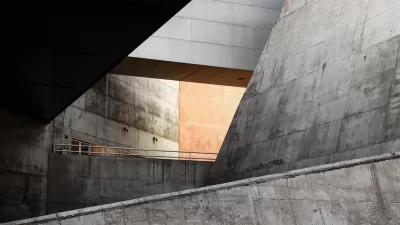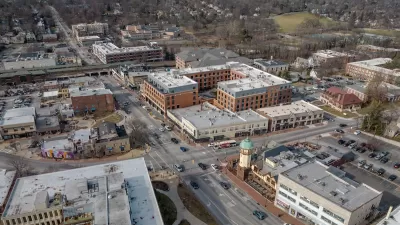Whether kissed by trade winds in Hawaii, home to dozens of unique cultures in the Caribbean, or scoured by Nor’easter’s off the coast of Maine, islands are magnetic to burnt-out urbanites but tend to be tough places for natives. I was a guest not long ago of Fernando Menis, an architect who has built an international reputation from Tenerife, in the Canary Islands. It’s not easy to be true to a unique place – as he aspires to be – when what works locally doesn’t always “translate” in the globalized and image-driven world of architecture.
Whether kissed by trade winds in Hawaii, home to dozens of unique cultures in the Caribbean, or scoured by Nor'easter's off the coast of Maine, islands are magnetic to burnt-out urbanites but tend to be tough places for natives.
I was a guest not long ago of Fernando Menis, an architect who has built an international reputation from Tenerife, in the Canary Islands. It's not easy to be true to a unique place – as he aspires to be – when what works locally doesn't always "translate" in the globalized and image-driven world of architecture.
The Canaries, long settled and for centuries a shipping hub (supplying explorers from Columbus onward) has every island advantage – a unique natural environment, stunning topography, great weather, and beaches – and just about everything wrong with island settlements. Tenerife has the crumbling legacy of high-speed, low-quality 1970s tourist growth, leftovers from "informal" slum building that preceded rapid growth, overburdened infrastructure, an insufficiently diverse economy, and numerous threats to unique natural environments.
Recently Tenerife has tried to put itself on the business and tourist map by erecting postcard-ready important works of architecture, like the self-consciously spectacular and somewhat chilly concert hall by Santiago Calatrava.
By contrast, Menis, like the kinds of "critical regionalists" historian Kenneth Frampton has long championed, tunes his architecture to local materials and craft skills. The Cuchillitos Park, in a beat-up neighborhood of Santa Cruz de Tenerife, may look like a rock sculpture, but the tight budget permitted little elaboration and so he has created an armature, more than a finished work of design. It will blossom into lushness as the exceedingly young plants grow in.
But Menis also applies an architectural inquiry to the tourist landscapes that engulfs much of the coast. Development typically consists of podlike hotel enclaves shrouded in jungly planting or parking. They tend to be poorly connected to the beach and other attractions. They aren't exactly self-contained, but there's hardly more than a sidewalk, let alone any obvious route to shop, sightsee or dine amid the general visual chaos. And the tourist zone developed separate from the older "real" cities, which are appealing, historic, walkable and full of people who live in Tenerife rather than just visit it.
His planning, undertaken annually with students he brings to the island does not try to remake development wholesale. One study threads pedestrian pathways among the developments, taking advantage of the dramatic topography and views. (An amazing amount of the hotel development does neither). Some follow ravines that furrow the landscape, making opportunities to draw the extraordinarily rare and unique landscape into the urbanized resorts. (Queries about future summer Architecture and Urbanism Studios can be directed to [email protected].)
Menis' work shows how locally focused approaches can recognize innate qualities and tease them out in circumstances where replicating the past – the default solution most places – doesn't apply.
Island economies can rarely compete with large-scale mainland cities, but I suspect Menis has understood a way for many of them to carve their own path, becoming successful by becoming more themselves and less like everywhere else.

Alabama: Trump Terminates Settlements for Black Communities Harmed By Raw Sewage
Trump deemed the landmark civil rights agreement “illegal DEI and environmental justice policy.”

Study: Maui’s Plan to Convert Vacation Rentals to Long-Term Housing Could Cause Nearly $1 Billion Economic Loss
The plan would reduce visitor accommodation by 25% resulting in 1,900 jobs lost.

Planetizen Federal Action Tracker
A weekly monitor of how Trump’s orders and actions are impacting planners and planning in America.

Wind Energy on the Rise Despite Federal Policy Reversal
The Trump administration is revoking federal support for renewable energy, but demand for new projects continues unabated.

Passengers Flock to Caltrain After Electrification
The new electric trains are running faster and more reliably, leading to strong ridership growth on the Bay Area rail system.

Texas Churches Rally Behind ‘Yes in God’s Back Yard’ Legislation
Religious leaders want the state to reduce zoning regulations to streamline leasing church-owned land to housing developers.
Urban Design for Planners 1: Software Tools
This six-course series explores essential urban design concepts using open source software and equips planners with the tools they need to participate fully in the urban design process.
Planning for Universal Design
Learn the tools for implementing Universal Design in planning regulations.
Caltrans
Smith Gee Studio
Institute for Housing and Urban Development Studies (IHS)
City of Grandview
Harvard GSD Executive Education
Toledo-Lucas County Plan Commissions
Salt Lake City
NYU Wagner Graduate School of Public Service






























